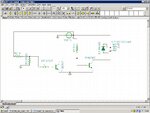nataraj87
Junior Member level 2

how to connect relay with microcontroller?
i m going to control my robot using relay.but i dont know how to connect the relay with MC.i want to know which pin of relay wants to connect in which pin of controller.so please help me,where to connect (NO,NC,CM )these pins in microcontroller .
i m going to control my robot using relay.but i dont know how to connect the relay with MC.i want to know which pin of relay wants to connect in which pin of controller.so please help me,where to connect (NO,NC,CM )these pins in microcontroller .






